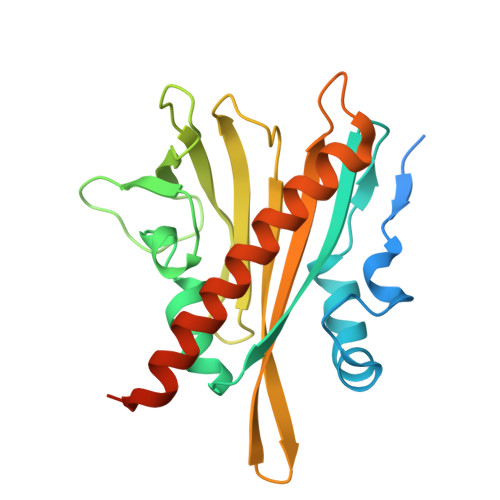Natural modulators of abscisic acid Signaling: Insights into polyphenol-based antagonists and their role in ABA receptor regulation.
Merino, J., Rivera-Moreno, M., Bono, M., Nunez-Villanueva, D., Gonzalez-Vega, A., Mayordomo, C., Infantes, L., Chikhale, R., Rodriguez, P.L., Albert, A.(2025) Plant Physiol Biochem 227: 110155-110155
- PubMed: 40527184
- DOI: https://doi.org/10.1016/j.plaphy.2025.110155
- Primary Citation of Related Structures:
9QK3, 9QK4, 9QK5, 9QK6 - PubMed Abstract:
The phytohormone abscisic acid (ABA) plays a pivotal role in regulating essential plant processes, including seed dormancy, germination, and stress responses. ABA signaling is mediated by PYR/PYL/RCAR receptors, which interact with clade A PP2C phosphatases to control downstream signaling pathways. Advances in structural biology have enabled the development of synthetic ABA modulators, such as agonists and antagonists, which can enhance or inhibit ABA signaling for agricultural applications. However, the high production costs and potential toxicity of synthetic modulators have motivated the search for natural alternatives. Here, we explore the potential of polyphenols, a class of plant secondary metabolites, as eco-friendly non-canonical ligands for ABA receptors. Through virtual screening and structural analysis, we identified coumaric acid and other hydroxycinnamic acids as natural ABA antagonists. These compounds compete with ABA for receptor binding, disrupting the ABA-dependent inhibition of PP2C phosphatases by PYR/PYL proteins. As a result, they counteract ABA-imposed stress responses in Arabidopsis thaliana, promoting seed germination and seedling establishment. Further chemical optimization yielded improved ABA antagonists based on hydroxycinnamic acid and natural amino acid conjugates. Their use in plants provides a sustainable alternative to synthetic modulators and opens new biotechnological strategies for crop management. In addition, our findings highlight a mechanism for fine-tuning ABA receptor activity in vivo through the interaction of ABA receptors with endogenous hydroxycinnamic acids.
- Instituto de Química-Física "Blas Cabrera" (IQF) Consejo Superior de Investigaciones Científicas, ES-28006, Madrid, Spain.
Organizational Affiliation:



















